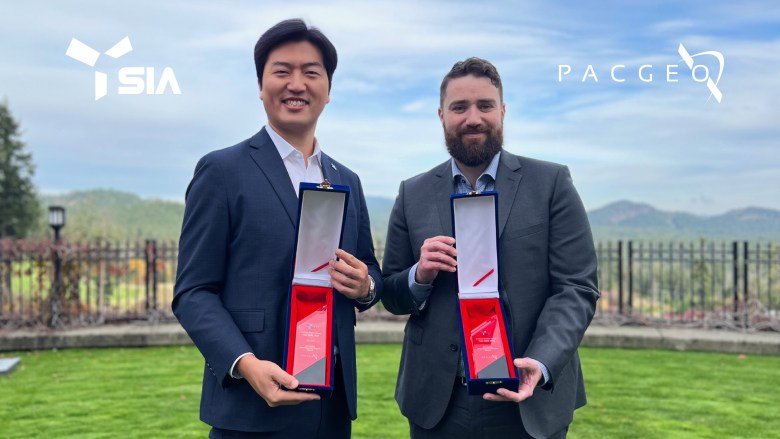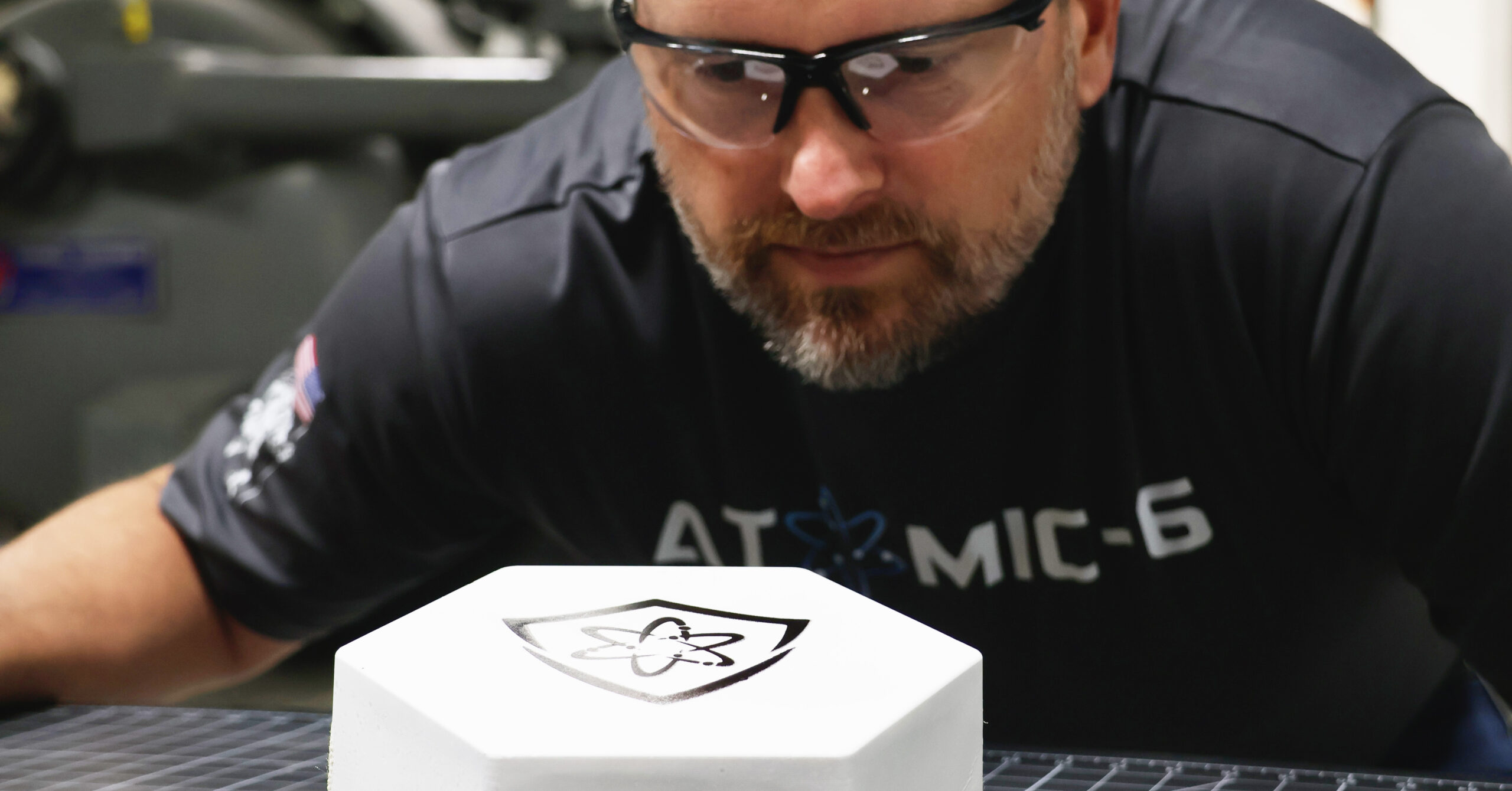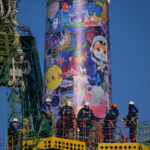Now Reading: China’s year-end space sprint
-
01
China’s year-end space sprint
China’s year-end space sprint

On this episode of Space Minds, SpaceNews China correspondent Andrew Jones joins host Mike Gruss to unpack China’s year‑end sprint in space: expected tests tied to Long March 10 and a new crew spacecraft, up to eight maiden commercial launches from firms like Landspace and Space Pioneer alongside CASC’s Long March‑12A, and the state‑backed funding push behind national mega‑constellations.
He also breaks down the recent “non‑Earth imaging” cat‑and‑mouse between Maxar and Chang Guang Satellite Technology—and shares how he verifies news from Finland as China’s space information ecosystem evolves.
Show notes and transcript
Click here for Notes and Transcript
Time Markers
00:00 – Episode introduction
00:31 – Welcome
00:59 – Year-end sprint
05:20 – What led to this?
09:32 – Big funding announcements
11:49 – Satellite one-upmanship
15:23 – Finding and verifying stories
Transcript – Andrew Jones Conversation
This transcript has been edited-for-clarity.
Mike Gruss – Hi everyone. I’m joined today by Andrew Jones, SpaceNews’ China correspondent. Andrew, I wanted to have you on today because you write a newsletter for us every two weeks about China’s space industry and their activities. In the latest issue, you wrote about China’s big push between now and the end of the year, particularly in the launch industry. Why don’t we start there—what should people be looking for between now and the end of 2025, which sounds like it’s going to be a real rush?
Andrew Jones – The first thing to look for is the China Report, which comes out every two weeks and summarizes our reporting from the Chinese space sector. The idea was to take a look at what’s going on in China before the end of the year and give readers an idea of what might be coming down the pipeline.
There are two main strands here. One is China’s crewed lunar program. We could see new tests for that—this year, for example, we saw a static fire for a shortened version of the Long March 10 first stage. We might soon see a low-altitude test or a full-size first-stage static fire. There’s also the new crew spacecraft, designed to take astronauts to the Moon. They’ve already done a pad abort test, and the next thing expected is an in-flight abort test at MaxQ. We’re not sure if this will happen at Jiuquan in northwest China or Hainan’s coastal spaceport. Those will be key signs of China’s progress on the hardware it needs to send astronauts to the Moon and back.
The other strand is the wave of launches nearing their first orbital tests. There are up to eight rockets from commercial space companies—plus one from the state-owned CASC, the Long March-12A, which could include a launch-and-landing test on its first orbital flight. Companies like Space Pioneer, Landspace, iSpace, Orienspace, Deep Blue Aerospace, Nebula, and Galactic Energy are all developing medium-lift rockets. Some aim to be reusable right away, while others will begin expendable and evolve later. The goal is reliability first—reaching orbit—then competing for contracts for China’s mega-constellations. Those contracts could provide their long-term business foundation.
Since these are first-time launches, and for some companies the first using liquid propellants, we might see both spectacular successes and failures—it will be fascinating to follow. Right now, Jiuquan is reportedly off-limits to commercial activity during October, likely because of national projects like the Shenzhou-21 mission sending three astronauts to the Tiangong Space Station for six months. They probably want to avoid any commercial mishaps interfering with that timeline, and there might also be lunar-program work underway.
Mike Gruss – Why is all this happening right now? Eight or so maiden launches all at once feels like a lot. What happened years ago that led to this moment?
Andrew Jones – To answer that, we have to go back to late 2014, when China’s central government looked at what was happening in the U.S. with companies like SpaceX and Planet—commercialization, innovation, cost reduction—and realized it couldn’t rely solely on state-owned Long March rockets, which were expendable and hypergolic. So the government began cautiously opening the sector to private capital.
A handful of companies soon appeared. Landspace was one, LinkSpace another (now defunct). Many began with small, solid-fuel rockets before moving to liquid propellant, which is more complex but more capable. Early on there wasn’t a clear market—maybe launching CubeSats for universities—but as policy guidelines expanded, more became possible. Funding grew, ambitions expanded, and companies moved toward larger launch vehicles.
For instance, Galactic Energy and Deep Blue Aerospace started around 2018 with small rockets capable of one or two tons to low Earth orbit, maybe more for Galactic Energy’s Pallas-1. But those are now too small to serve constellation launches for networks like Guowang or Chanfan, which require lofting many satellites at once. These firms are already planning larger successors—Nebula-1 to Nebula-2, Pallas-1 to Pallas-2—and others have moved into the Falcon-9 class. Landspace, for example, has shifted to stainless steel reusable rockets capable of around 17–22 tons to LEO. Over the last decade, ambitions, funding, and policy support have all ramped up, leading to today’s surge of activity in both state and commercial sectors.
Mike Gruss – You’ve mentioned the money coming into China’s space programs, especially the launch market. There was a big announcement last week, but it feels like we’re hearing about new funding rounds every few weeks. Talk me through what’s happened recently, especially that latest announcement.
Andrew Jones – In the last few years, China’s government has declared commercial space to be of strategic importance and worthy of state support. Local and provincial governments have followed suit, competing to attract and fund space companies to spur regional development. As a result, we’re seeing much larger funding rounds—hundreds of millions of dollars rather than tens.
Two major examples are Space Pioneer and Landspace, each raising over $300 million. Beijing sees national mega-constellations as strategically vital, but building them requires dramatically expanding launch capacity. So, alongside building new spaceports, China is ensuring these launch firms have the capital to develop reliable, high-cadence vehicles to deliver satellites efficiently.
Mike Gruss – I want to switch gears and talk about a story mentioned in your newsletter—a sort of cat-and-mouse game between a Maxar satellite and a Chinese satellite. What happened there?
Andrew Jones – It’s a fascinating development in the geopolitical space dynamic between China and the U.S. Earlier this year, a Maxar employee posted on LinkedIn that one of their satellites had captured a non-Earth image of Shijian-26, part of a Chinese experimental satellite series used to test new technologies in orbit. The satellite was said to be for remote sensing—Earth-observation testing—but the high-resolution image, taken from roughly 50 kilometers away, was remarkable, especially given how opaque that program is.
Then, a few months later, Chang Guang Satellite Technology—a quasi-state-owned commercial company operating China’s Jilin-1 Earth-observation fleet—responded by imaging a Maxar satellite, effectively returning the favor. While the U.S. WorldView satellites aren’t classified, the gesture clearly said, “We can do this too.” It’s another example of the cat-and-mouse dynamic we already see in geostationary orbit, where inspector satellites maneuver near each other. The image quality from both sides was stunning and demonstrated impressive precision. Non-Earth imaging—photographing satellites on orbit—is becoming a new frontier, and the public sharing of these images shows a growing confidence on both sides.
Mike Gruss – One more question before we go. You file from Finland, not China. How do you report from where you live—how do you find and verify your stories?
Andrew Jones – That’s a good question. I get asked that a lot. The truth is, I just do it—it’s a mix of constant monitoring, verification, and context. I track Chinese state media, companies like CASC, and the commercial space scene, while following what insiders and enthusiasts post on Chinese social media. I cross-reference and verify wherever possible, often using satellite imagery to confirm activity like test preparations.
Because transparency is limited, much of my work involves adding context. For example, when a company announces a big funding round, I try to explain why it matters and how it fits into the broader strategy. Having followed China’s space sector closely for years helps provide that perspective.
In some ways, the sector has become more transparent. For example, during crewed missions like Shenzhou-21, China now holds press conferences where officials from the human spaceflight agency share updates. It’s not full transparency—questions are usually pre-approved—but you can glean useful details.
Another interesting change is the expansion of launch sites—Hainan’s coastal port and the new Eastern Maritime Spaceport in Shandong. These are harder to keep under wraps, and enthusiasts with long-lens cameras often capture preparations, giving us early clues about upcoming tests or launches. On the flip side, it’s become harder to use Chinese social media: you now need verified local accounts, and many enthusiast forums have been shut down. The information environment is evolving quickly.
There’s much more happening now across many domains, making it a challenge—but also incredibly rewarding—to cover. It’s a fascinating time for China’s space program.
Mike Gruss – Andrew, thank you so much. I know our readers and listeners appreciate your reporting. For anyone who’d like to subscribe to Andrew’s China Report, you can find it at SpaceNews.com. This has been Space Minds—thanks for joining us.
About Space Minds
Space Minds is a new audio and video podcast from SpaceNews that focuses on the inspiring leaders, technologies and exciting opportunities in space.
The weekly podcast features compelling interviews with scientists, founders and experts who love to talk about space, covers the news that has enthusiasts daydreaming, and engages with listeners. Join David Ariosto, Mike Gruss and journalists from the SpaceNews team for new episodes every Thursday.
Watch a new episode every Thursday on SpaceNews.com and on our YouTube, Spotify and Apple channels.
Be the first to know when new episodes drop! Enter your email, and we’ll make sure you get exclusive access to each episode as soon as it goes live!
Space Minds Podcast
“*” indicates required fields
Note: By registering, you consent to receive communications from SpaceNews and our partners.
Stay Informed With the Latest & Most Important News
Previous Post
Next Post
-
 012024 in Review: Highlights from NASA in Silicon Valley
012024 in Review: Highlights from NASA in Silicon Valley -
 02Panasonic Leica Summilux DG 15mm f/1.7 ASPH review
02Panasonic Leica Summilux DG 15mm f/1.7 ASPH review -
 03How New NASA, India Earth Satellite NISAR Will See Earth
03How New NASA, India Earth Satellite NISAR Will See Earth -
 04And Thus Begins A New Year For Life On Earth
04And Thus Begins A New Year For Life On Earth -
 05Astronomy Activation Ambassadors: A New Era
05Astronomy Activation Ambassadors: A New Era -
06SpaceX launch surge helps set new global launch record in 2024
-
 07Space Force plans new ‘Futures Command’ amid pressure to speed up modernization
07Space Force plans new ‘Futures Command’ amid pressure to speed up modernization





















